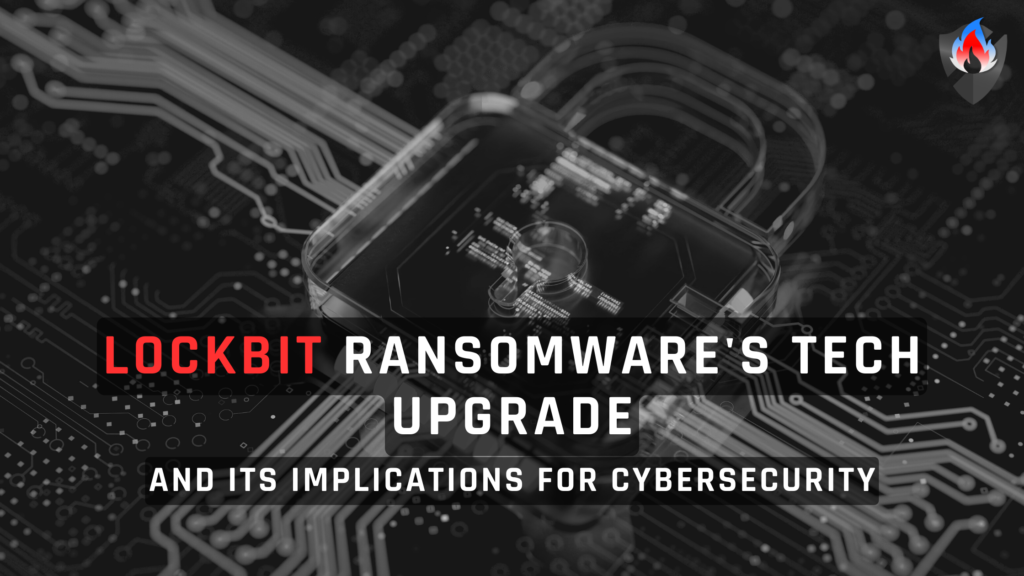In the ever-evolving landscape of cyber threats, the resilience of ransomware groups despite significant law enforcement crackdowns serves as a stark reminder of the persistent risk these entities pose to businesses and organizations worldwide. Among these formidable adversaries, the LockBit ransomware group has recently made headlines, signalling not just a comeback but a strategic technological advancement aimed at fortifying its operations against future disruptions. This blog post delves into the resurgence of LockBit, the implications of its upgraded technology on ransomware attacks, and the comprehensive cybersecurity measures businesses must undertake to safeguard their digital assets.
The LockBit Comeback: Admitting Fault and Forging Ahead
In a surprising turn of events, after law enforcement agencies seized its infrastructure, LockBit ransomware has not only resumed its nefarious activities but has also embarked on a mission to bolster its operational security. A public message from the group concedes past negligence, promising an overhaul in security protocols. This admission marks a rare instance of transparency within the shadowy realm of cybercrime. However, it also signals LockBit’s determination to persist and evolve in the face of adversity.
Technological Reinventions: New Encryptors and Servers
LockBit’s strategic response to law enforcement’s intervention is multifaceted, introducing new encryptors and servers to sustain its ransomware-as-a-service (RaaS) operations. This move not only demonstrates the group’s resilience but also raises concerns about the potency of future attacks. The deployment of advanced encryptors could potentially complicate ransomware detections and file recoveries, thereby elevating the stakes for businesses and cybersecurity professionals alike.
What Are The Consequences of LockBit Ransomware Attacks?
LockBit’s attacks are more than mere inconveniences; they are catastrophic events that disrupt operations, erode trust, and impose significant financial burdens on victims. From data encryption to ransom demands, the multifaceted consequences encompass operational disruptions, financial losses, legal complications, and reputational damage. This grim scenario underscores the urgency of adopting proactive cybersecurity defenses and recovery strategies.
How Does LockBit Ransomware Work?
Understanding how LockBit infiltrates and devastates systems is crucial for developing effective countermeasures. The ransomware exploits various vectors, including phishing emails, drive-by downloads, and brute force attacks, to deploy its malicious payload. Once inside the network, LockBit’s self-spreading capabilities and post-exploitation techniques enable rapid encryption of files, compounding the victim’s crisis by demanding ransoms for decryption keys and threatening data leaks.
LockBit ransomware is a formidable cybersecurity threat that employs a variety of sophisticated methods to infiltrate and compromise systems. Initiating its attacks through phishing emails, it tricks users into downloading malicious files or clicking on harmful links, setting the stage for infection. Additionally, it exploits drive-by downloading techniques, gaining entry when users visit infected websites and use brute force attacks to break into systems with weak security measures. Uniquely adept at self-spreading, LockBit can autonomously propagate within an organization’s network using tools like Windows PowerShell and SMB. Once inside, it executes post-exploitation strategies to elevate its privileges and prepare systems for encryption, followed by spreading across the network to encrypt files, subsequently demanding a ransom for decryption keys. Moreover, LockBit threatens to leak stolen data if the ransom is ignored, further complicating recovery efforts for victims. Notably, it employs triple-extortion tactics, including data leaks, encryption, and DDoS attacks, to pressure victims into paying the ransom. Operating under a ransomware-as-a-service (RaaS) model, LockBit enables affiliates to launch attacks, sharing the ransom proceeds, thus broadening its impact across the digital landscape.
How To Prevent LockBit Ransomware Attack?
Preventing LockBit attacks necessitates a comprehensive and vigilant approach to cybersecurity. Organizations must prioritize employee training, enforce strong passwords and multi-factor authentication, manage vulnerabilities, segment networks, and implement robust backup and recovery measures. Additionally, deploying endpoint protection, intrusion detection systems, and access controls can significantly mitigate the risk of LockBit intrusions.
Best Practices to Secure From Ransomware Attacks?
In the face of LockBit’s menacing advances, ensuring an organization’s resilience against ransomware attacks is paramount. Adopting best practices for backup and recovery offers a lifeline, enabling businesses to restore operations swiftly post-attack. Key strategies include regular and offline backups, backup verification, disaster recovery orchestration, and establishing a risk management program. Additionally, embracing trusted immutability and ensuring backup resiliency are critical steps in fortifying defenses against ransomware’s devastating impacts.
Conclusion: Navigating the Cyber Threat Landscape with Expertise
The LockBit ransomware’s resurgence and technological evolution serve as a stark reminder of the persistent and evolving cyber threat landscape. As businesses and organizations grapple with the complexities of securing their digital assets, the importance of comprehensive cybersecurity strategies cannot be overstated. Implementing robust backup and recovery protocols, alongside vigilant preventive measures, is essential for mitigating the risks posed by ransomware attacks.
In an era where cyber threats loom large, partnering with cybersecurity experts becomes a strategic imperative. Bluefire Redteam offers unparalleled cybersecurity services designed to protect, detect, and respond to sophisticated cyber threats like LockBit ransomware. By leveraging the expertise of the Bluefire Redteam, businesses can fortify their defenses and navigate the digital age with confidence.
Don’t let your organization become the next victim of LockBit ransomware. Contact Bluefire Redteam today to secure your digital assets and ensure your business’s resilience against cyber threats.


